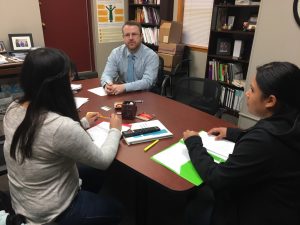Key Questions:
- Who else could we involve?
- Who are my allies?
- How can I motivate my peers?
Team Building Activities
Developed from the YACH handbook, the following team building activities focus on three developmental stages: forming, storming and norming. During the forming stage, team members are getting to know one another. In storming, team members learn how to deal with conflict and openly listening to others’ opinions. Finally, in norming, members learn activities to assist with issues when the group has become comfortable with one another, but there is a lack of focus and productivity.
Identifying Partners
People and organizations who can provide information, resources, expertise, access to participants, and much more is an essential part of project success. Relational Mapping from Building Community Toolkit is a process to map different people and organizations in your community from different sectors (public, private/business, non-profit, religious etc.) and to consider how closely they might be involved in your work.
Meeting with Stakeholders
Who is a stakeholder?
A stakeholder is anyone who has a stake, or interest, in your efforts. Typical stakeholder groups include youth, parents, volunteers, business leaders, elected officials, collaborators and funders. A list of stakeholders can be produced by answering the question, “Who cares?”
Tips for Holding Effective Meetings with Stakeholders
Before and during these meetings, all stakeholders will want to feel that they are on equal footing in shaping the action plan and making decisions about its design.
Before the meeting:
- Set clear goals for the meeting. Be realistic about what can be accomplished in one meeting, and make sure you have enough time to accomplish these goals
- Ask all stakeholders to contribute items to the agenda. It is helpful to have each stakeholder think about agenda items for the meeting in advance. You may want to conduct a brief conference call prior to your first meeting in order to set goals and prepare an agenda.
During the meeting:
- Follow the agenda and keep to the times set for each item. As much as possible, the facilitator or meeting leader should try to follow the agenda and keep discussing within the time allotted, unless the group agrees that an extension is necessary.
- Use an icebreaker at the beginning of the meeting. Starting a meeting with an icebreaker is a way for participants to become more familiar with each other and get energized to positively tackle the tasks on the agenda. Try to have youth lead the icebreakers to keep the group energized.
- If your group is a group of students, a name game would be a good icebreaker to start with. There are lots. One is to have everyone come up with an animal that starts with the first letter of their first name (Ex: Elephant Evan) and have everyone repeat what the person’s name is along with their animal. Add a physical movement for each animal if you’re group is adventurous.
- If your group is a group of community members or adults, a good icebreaker could be to have everyone go around the circle, share their name, and answer the question “why does this issue (the issue you’re talking about) matter to you?”
- Use agreed-upon methods to prioritize action steps. Sometimes stakeholders find that it is easy to generate ideas for action steps but difficult to prioritize them.
- Be clear about next steps before you leave the meeting.
After the meeting:
- Follow up on any questions or next steps.
- Put your plan on engaging stakeholders into action. How will you keep them informed and engaged as your project develops.
Webinar:
If you are interested in learning about how current sites acquired stakeholders click here:https://extension.zoom.us/recording/share/7xjfcA2Z5Q1uACeetA0Zkr4fV4mv7GGL8Sth_W2FuZ-wIumekTziMw?startTime=1537914785000
This webinar shows current 4-H sites discussing how they gathered information from their community to understand it’s needs and to hone their projects. It also explains how they built partnerships and connections.
Youth/Adult Partnerships
Youth/Adult partnerships are critical to the success of community efforts involving youth, since many of the spaces and resources required for success are dominated by adults. Many of these adults may not be accustomed to working together with and sharing power with youth. Spending time periodically to build youth/adult partnerships can improve group dynamics and improve communication.
A simple activity to create norms for communication is to separate youth and adults into two separate rooms. Have the youth generate a list of “Benefits of Working with Adults” and “Challenges of Working with Adults” and have the adults generate similar lists about working with youth. Then come together and share the lists. Process the activity by identifying areas that showed up for both youth and adults and ways the lists are different. Then consider creating some practices or norms that will maximize the benefits and minimize the challenges.





